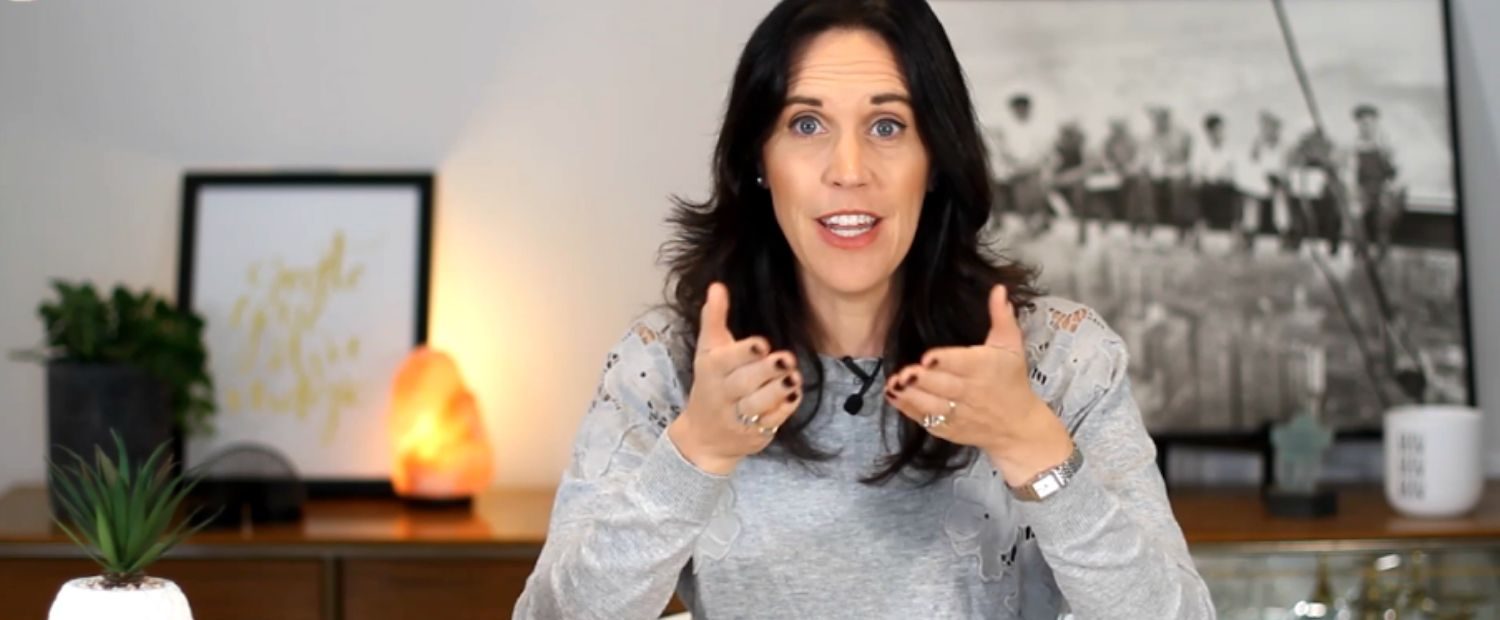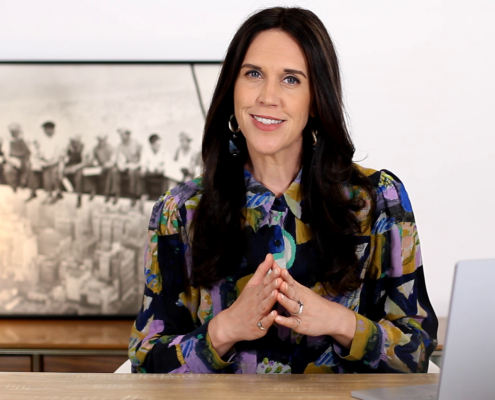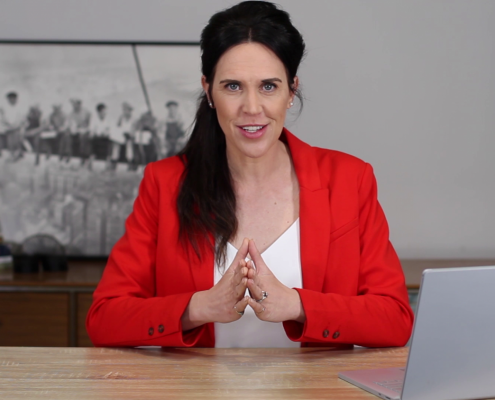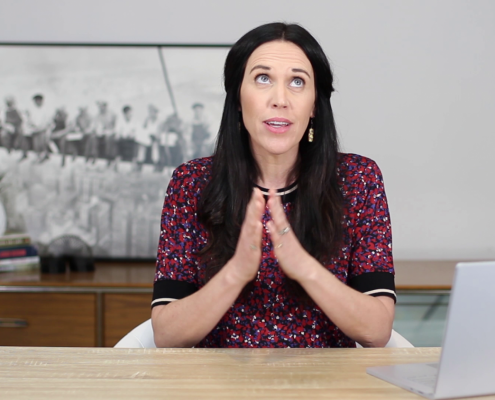When I first heard of Amy Edmondson’s research on psychological safety it solidified one of the key aspects of what I feel is important for leaders to cultivate, and that’s creating a ‘safe space for descent’ – welcoming bad news, you’ve heard similar versions of this I’m sure.
And while her research started 20 years ago, it was validated even further when the New York Times did a piece on Google’s Project Aristotle which looked at what are the characteristics of high performing teams at Google – you guessed it, psychological safety.
What is psychological safety?
Psychological safety is about creating a space that invites curiosity and learning and it’s critically important in our current knowledge economy, because growth is dependent on the quantity, quality, and accessibility of the information available, rather than the means of producing something faster as it was in the 2nd industrial revolution.
We need to innovate faster and our work is constantly changing, so we need to get all members of the team to contribute what they know so that we understand the issues, as much as the opportunities and that gives us the knowledge to be innovative and creative, MORE QUICKLY.
So why am I saying that it’s critical to have psychological safety in the boardroom?
Well wouldn’t you agree that the board operates as a team? And if that’s the case, don’t we want a high performing team?
But I’ll go a bit deeper here, having psychological safety is necessary where there is interdependence and uncertainty. By the very notion of teamwork, we’re looking at interdependency, but broadly leadership and the workplace both have interdependency.
And in terms of uncertainty, well that’s the name of the game in 2019. I mean the only thing that is certain, is uncertainty.
But to go one step further, which really captures why I’m passionate about psychological safety in the boardroom and it’s the foundation of what I teach:
- boardroom culture is just as important as your governance framework in terms of how each individual director shows up to lead from the heart and lead safe & healthy work from the boardroom
- because the culture you set in the boardroom, will influence the organisational climate and therefore your culture and therefore the decisions made at the coal face and these absolutely include decisions around risk management.
Therefore, it’s imperative that we actively prioritise creating a psychologically safe space for each director to contribute.
Now that we’ve established what is psychological safety and why it’s important in the boardroom. Let’s look at how you can demonstrate these behaviours.
#1 – Embrace failure
When studying medical teams at hospitals as a grad student, Edmondson assumed she’d find that the top performing teams made the fewest medication errors.
But to her surprise, she found exactly the opposite: Better performing teams seemed to be making more errors than worse performing teams.
However, it wasn’t that the best teams were making the most errors, but that the best teams were admitting to errors and discussing them more often than other groups did. In other words, what distinguished the best performing teams was psychological safety, which facilitated a “climate of openness.”
This concept of embracing failure is what Edmondson refers to as a learning culture and it’s one that is also well documented when looking at what makes a culture of safety – that is, a culture that is continually learning.
In fact, the co-Founder of Pixar, Ed Catmull says that failure is a key part of their creative process. But he admits that people at Pixar – and at Disney Animation – still get this wrong. “They think it means accept failure with dignity and move on.” He says, “the better, more subtle interpretation is that failure is a manifestation of learning and exploration. If you aren’t experiencing failure, then you are making a far worse mistake: You are being driven by the desire to avoid it.”
In this era, to be successful we need to innovate quickly and think creatively, and that means we need to embrace failure as a means to achieving success.
So, what can you do personally in the boardroom to embrace failure? Well, wherever possible, Set The Stage. Particularly when you’re looking at something new. New strategies, new markets, new investment in a safety initiative, new incentive schemes or new organisational targets.
By setting the stage, frame the work or new initiative and acknowledge the challenges ahead. Acknowledge the unknown. This creates the rational for people to speak up.
As Edmondson points out on Mark Crowley’s Leading from the Heart podcast, if Wells Fargo Bank would have embraced failure and admitted that they were introducing some extremely challenging organisational targets, which meant they weren’t sure what issues or opportunities those targets would create, then maybe management would have been more open and comfortable to advise the board that the targets were creating a culture that was not aligned to the organisation’s values.
This is particularly powerful when you can communicate this message to the executive. If you proactively lay out the challenges, communicate like one of the directors at Pixar, “fail early and fail fast” or “be wrong as fast as you can”, you create a safe space for the executive to tell you what you should hear, not just what you want to hear.
#2 – Acknowledge your own fallibility
It’s not uncommon in the boardroom for you to feel that there’s an expectation that you should have the answers, for example you feel the pressure to be seen as knowledgeable, but this actually creates an environment that is hostile to true learning.
I’ve been there as well. That feeling that I’m supposed to have an immediate answer to a directors’ question, and when I don’t have that answer, or the answer they’re looking for, it’s almost as if people shut down or are very dismissive. And that is toxic to your culture of learning and it destroys psychological safety.
It takes courage to be vulnerable and admit that you don’t have answer, in fact it’s very odd to think that as humans, in this complex world, and complex workplace, that we should have the answer. But it’s been ingrained in us since we were children that to have courage is to be confident.
So remember, no question is a stupid question! And you don’t need to have all the answers.
#3- Model the curiosity that you’re looking for
Lead by example by asking people questions to get that curiosity going. When you ask me a question, you make it automatic for me to answer. But there are two very important things to remember here:
- People don’t need to have an answer to your question, so you can frame your question in a way that welcomes a discussion or conversation, not a yes/no response and not in a way that implies someone needs to have an answer.
- Secondly, don’t shoot the messenger. Resist that urge to take bad news out on the person who was brave enough to speak up – in fact, celebrate openly in the room the courage that person had to say what they felt needed to be said, because that’s exactly what you’re looking for and others should know what it looks like.
IN SUMMARY
So in wrapping up:
1 – Acknowledge the challenges ahead which will set the stage for people to speak up
2 – Have the courage to be vulnerable and communicate that you don’t have the answers, which signals to others you welcome what they have to say
3 – Model the curious behaviour that you’re looking for by asking questions which will encourage people to respond.
QUESTIONS & ACTION
If you found this topic interesting, check out this year’s Director Health & Safety Dashboard. It covers critical issues from 2018 such as the lowering of global trust levels, across business, government and regulatory landscapes that should be on every directors’ radar in 2019. To get your hands on a copy, check out the Resources section of this post.
One of the foundational principles of leading safe & healthy work is sharing knowledge – across business, industry and borders.
So in the context of sharing, let this community know in the comments below,
- How well do you think your board practices psychological safety? And why?
Leave a comment below and let me know.
Remember, share as much detail as possible in your reply. Your story and/or thoughts may lead to someone’s meaningful breakthrough and it all contributes to this audience knowing What to Ask, and When to Act #knowWTA
Important: share your thoughts and ideas directly in the comments. Links to other posts, videos, etc. will be removed.
Thank you so much for adding your perspective to the conversation!
Thanks for watching!
Welcome!
I’m Samantha
As a business leader, you have a responsibility to lead safe and healthy work whether that’s at an executive or board level. My job is to assist you in your role by giving you the tools and knowledge to know what to ask, and when to act.
RESOURCES
YOU MAY ALSO LIKE…
FEATURED CONTENT
[text-blocks id=”4249″ plain=”1″]








Let us know what you have to say:
Want to join the discussion?Your email address will not be published.